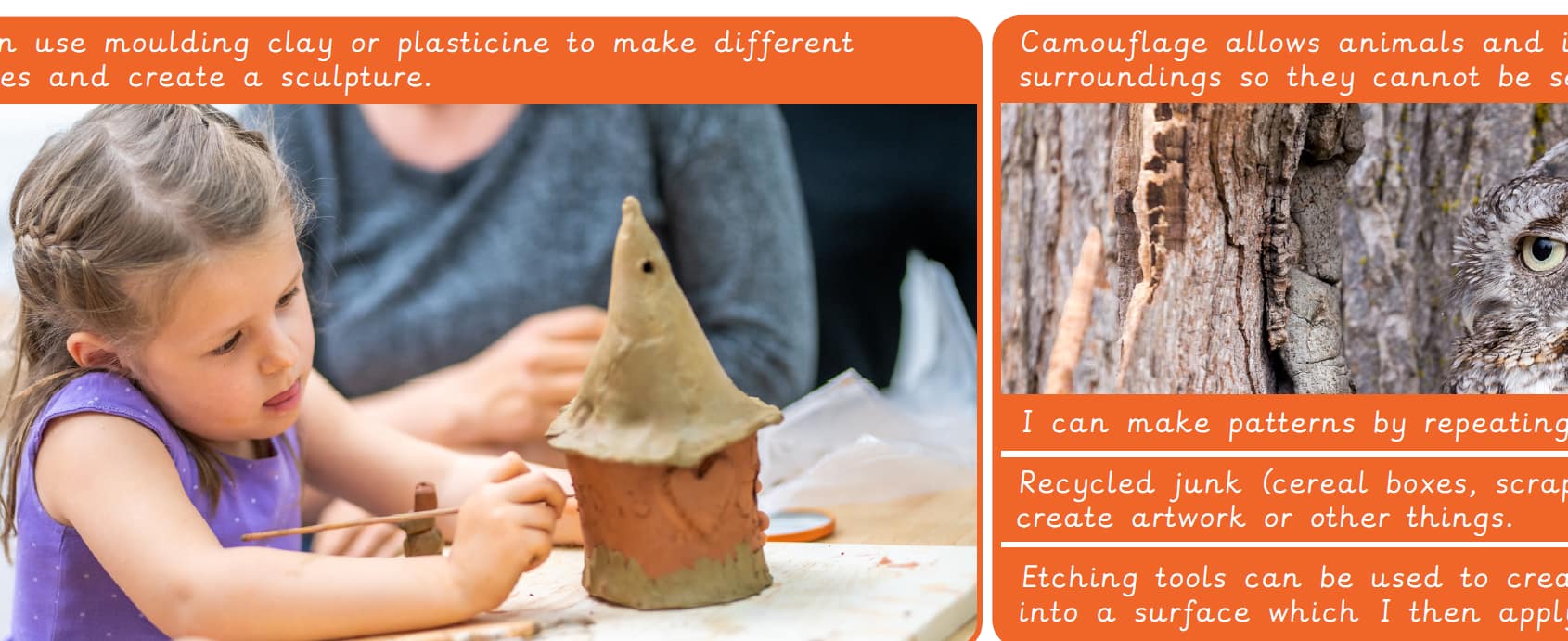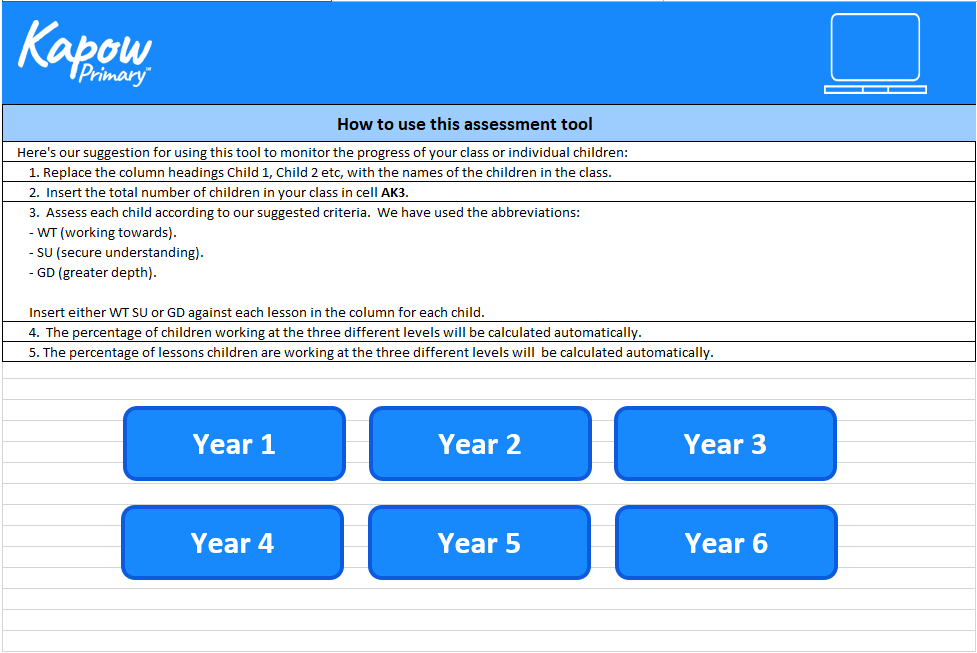
A Knowledge organiser that captures the essential knowledge and skills learnt throughout the Design and Technology, Year 2, Textiles: Puppets.
This resource introduces the pupils to the basics of textile design and construction as they create their own custom hand puppets. Children will explore techniques such as cutting, glueing, stapling, and pinning to assemble their designs. They will also learn how to use tools like safety pins and templates to bring their ideas to life. Key vocabulary includes terms such as fabric, design, template, stencil, decorate, and technique, helping the pupils build a foundation in textile-based craftsmanship. The pupils are encouraged to experiment with materials like felt, beads, buttons, and wool to personalize their puppets with unique colours, textures, and features. Key facts within the organiser highlight the history of puppets, first invented over 3,000 years ago in Egypt and originally made from clay. This historical context adds depth to the project, fostering curiosity about the origins and cultural significance of puppets.
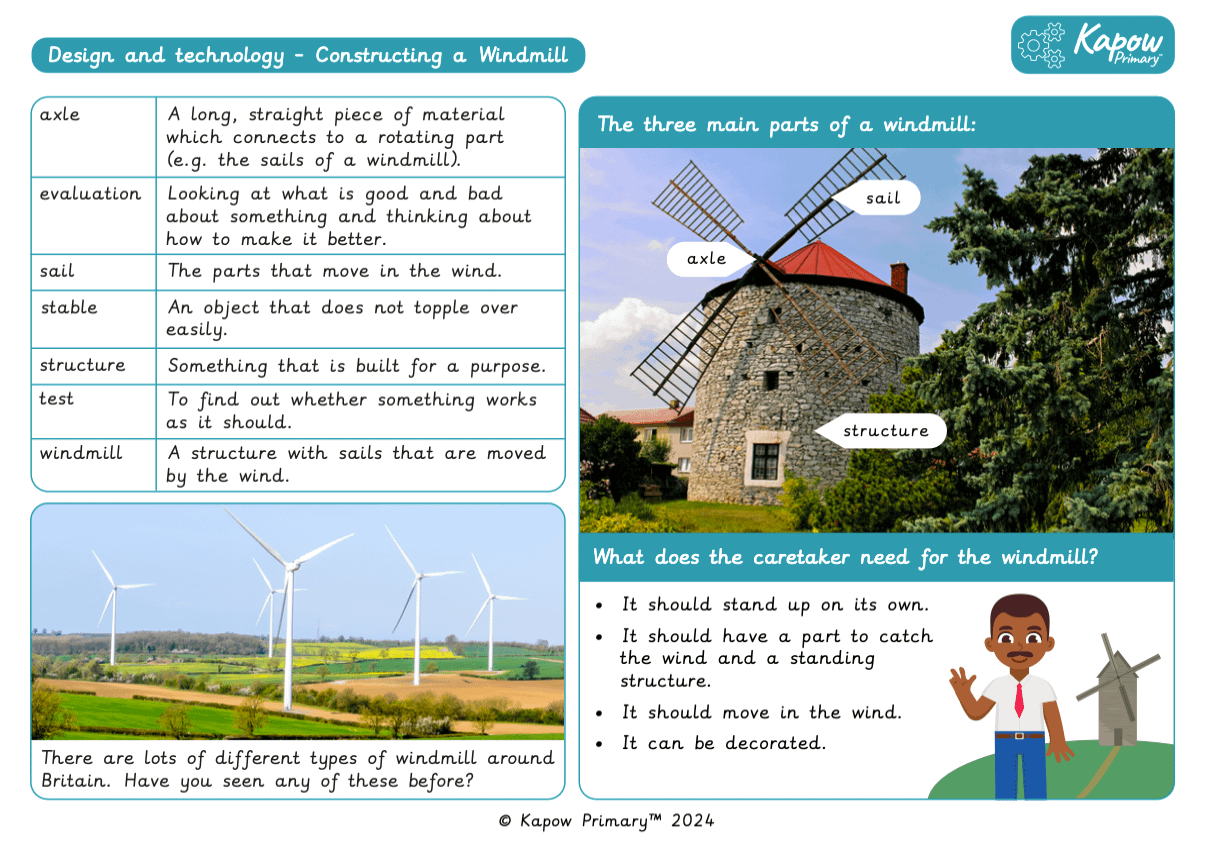
A Knowledge organiser that captures the essential knowledge and skills learnt throughout the unit Design and technology, Year 1, Structures: Constructing a windmill.
This resource introduces the pupils to the basics of designing and building functional structures by constructing their own windmills. The pupils will learn about the three main parts of a windmill: the sail, axle, and structure while developing an understanding of how these components work together to harness the power of the wind. Key vocabulary includes terms like axle, sail, structure, stable, evaluation, and test, helping the pupils build a strong foundation in engineering and problem-solving. The pupils are encouraged to design stable windmills that can stand on their own and have moving parts to catch the wind. They will also explore creative ways to decorate their windmills, adding a personal touch to their projects. The document emphasises the importance of testing and evaluating designs, encouraging the pupils to think critically about what works well and how to make improvements. Through this process, the pupils develop practical problem-solving skills and an understanding of how design can serve a purpose.
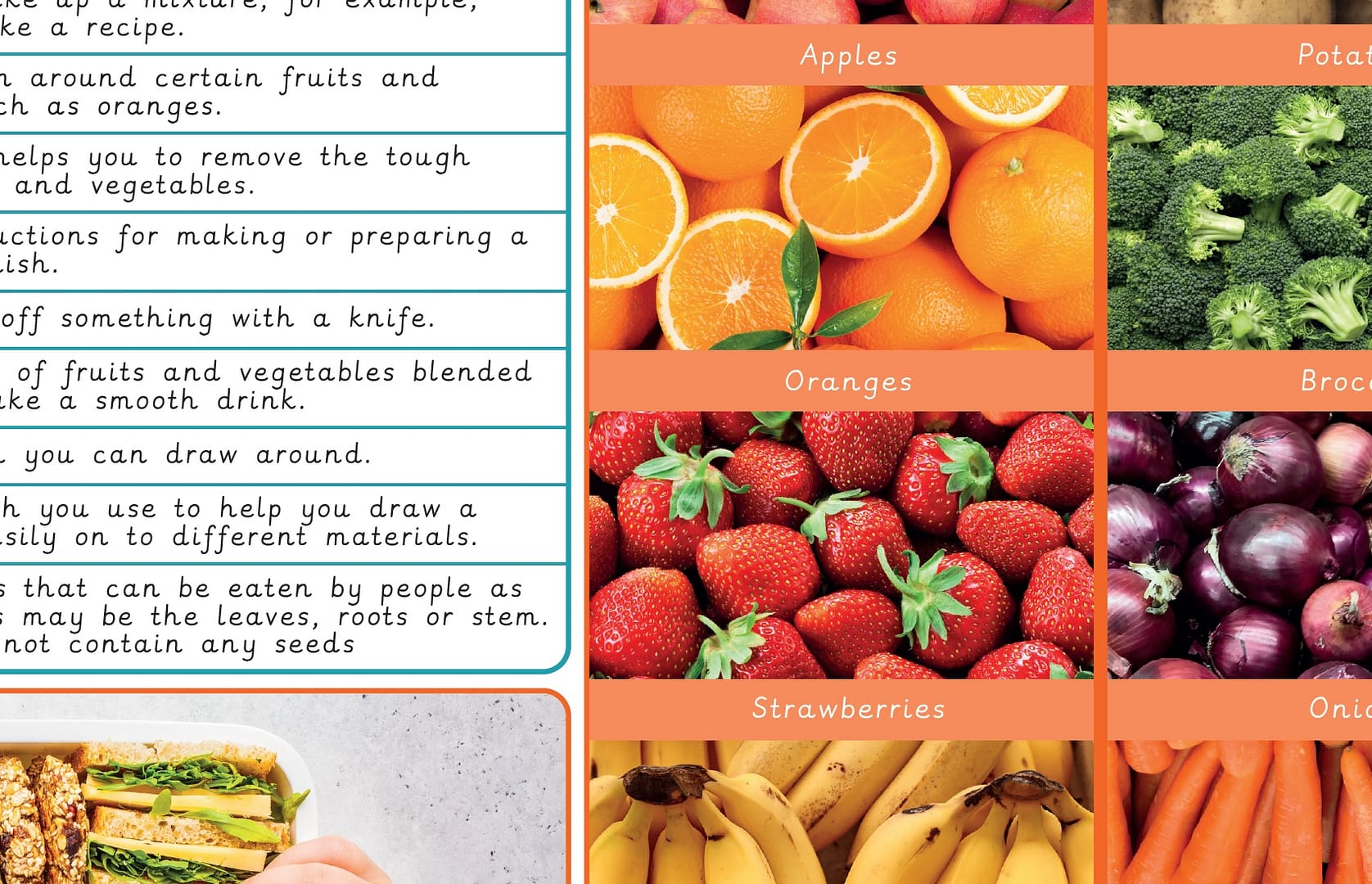
A Knowledge organiser that captures the essential knowledge and skills learnt throughout the unit Archived – Design and technology, Year 1, Cooking and nutrition: Fruit and vegetables.
This resource introduces the pupils to the importance of healthy eating and food preparation. It explains the differences between fruits, such as oranges and strawberries, which contain seeds, and vegetables, like carrots and broccoli, which do not. The pupils will also learn about the need to eat at least five portions of fruit and vegetables daily to maintain good health. The organiser includes key vocabulary words, such as blender, peeler, slice, smoothie, and recipe, to build the pupils’ understanding of the tools and techniques used in preparing food. They will practise skills like peeling, slicing, and blending, developing confidence in handling ingredients and understanding how tools assist in preparation. The focus on food hygiene, including washing hands and cleaning tools, ensures safe and effective learning.
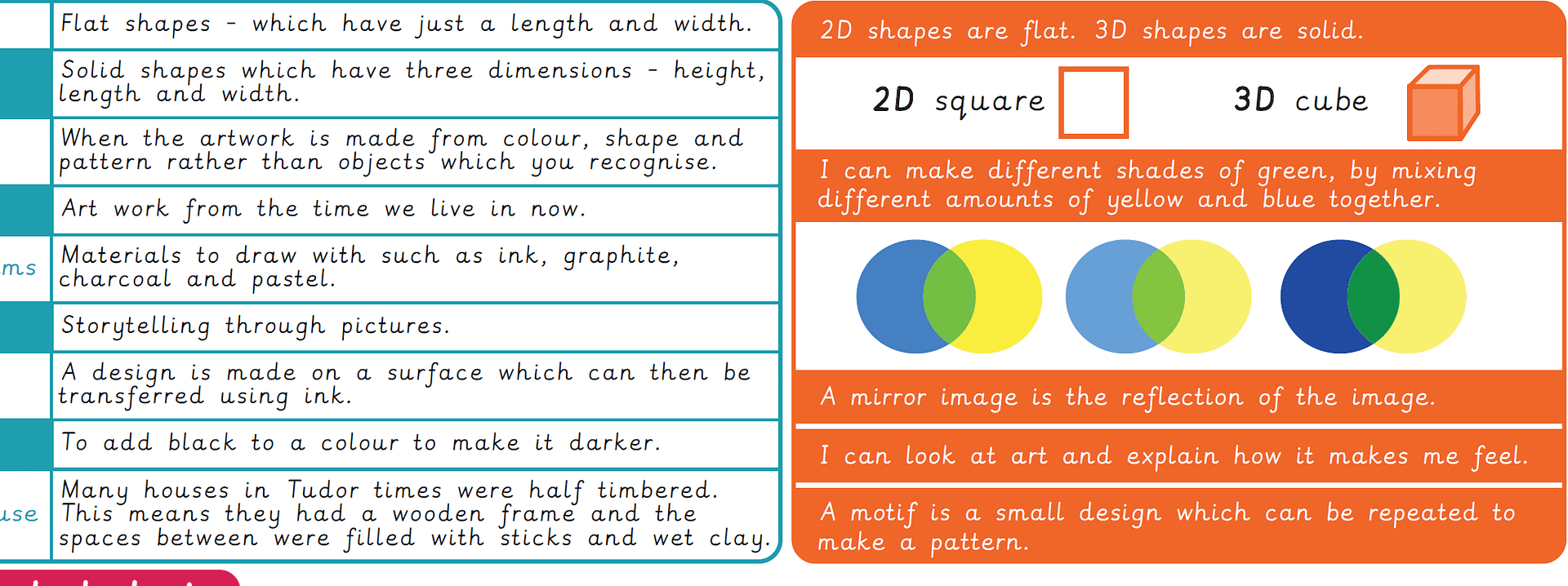
This is the original Art and design scheme, which has now been replaced by our new Art and design scheme. Here is the revised Art and design scheme of work for KS1.
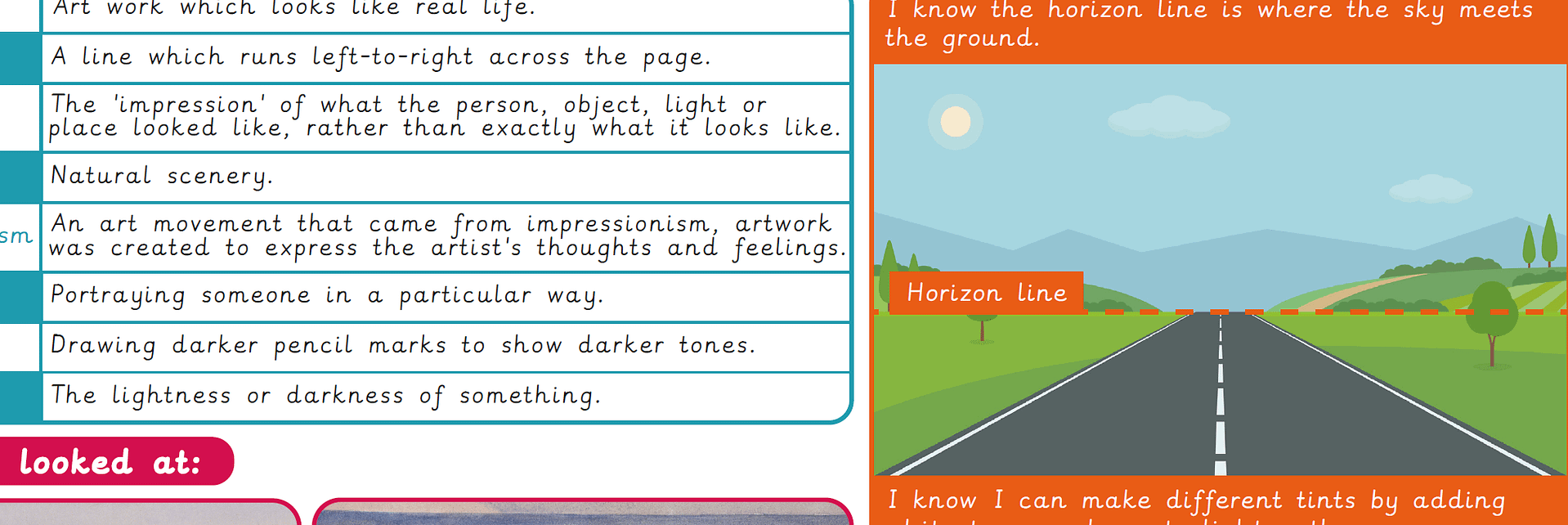
A Knowledge organiser that captures the essential knowledge and skills learnt throughout the unit Archived – Art and Design, Year 1, Landscapes Using Different Media.
This resource is designed to support the pupils as they explore different techniques for creating landscapes using a variety of media. It introduces key vocabulary such as horizon line, shading, tones, representation, and texture, helping the pupils develop an understanding of how artists create depth and atmosphere in their work. The pupils will also learn about important artistic movements such as Impressionism and Post-Impressionism and study the works of artists including Vincent van Gogh, Auguste Renoir, Peder Severin Krøyer, and Joaquín Sorolla. It is perfect for consolidating essential knowledge and fostering creativity by encouraging the pupils to experiment with different materials and techniques.
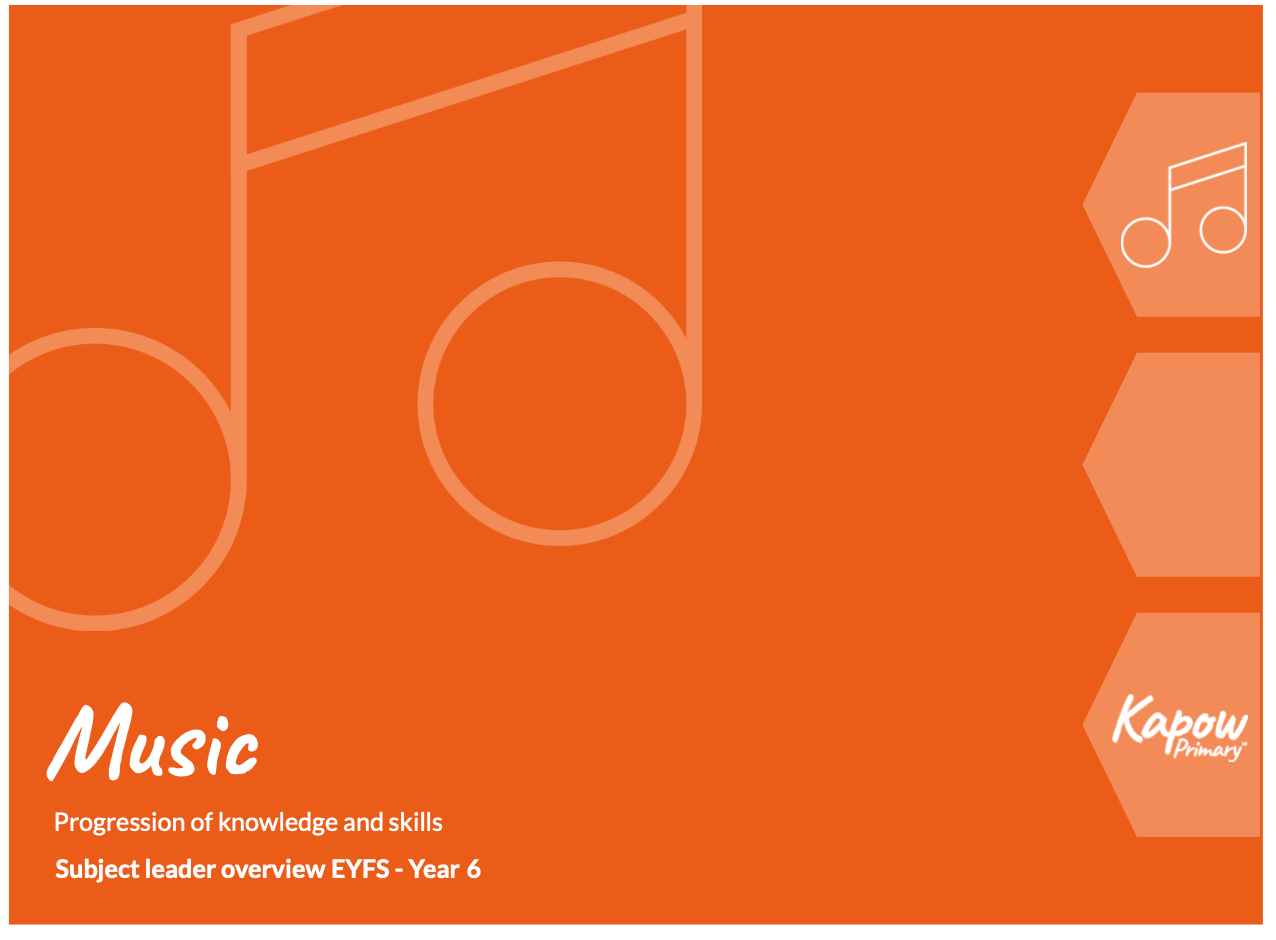
Please note this document was recently updated to reflect changes to our long-term plan. See the Music: Long-term plan to find out more about these changes.
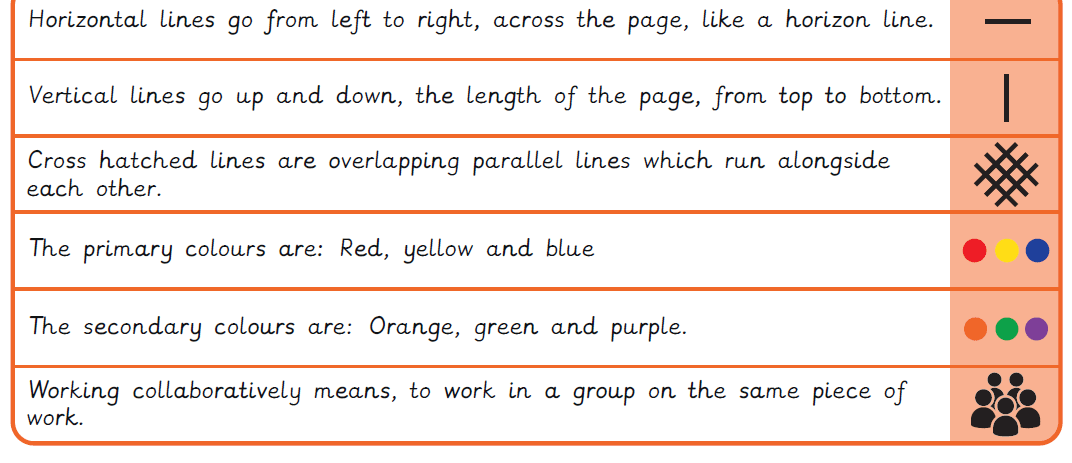
A Knowledge organiser that captures the essential knowledge and skills learnt throughout the unit Original Art and design scheme, Y1, Formal elements of art.
This Original Art and design scheme resource centres on the formal elements of Art for Year 1 pupils. It delves into foundational artistic concepts through the exploration of composition, shape, and colour and features various art movements, from Photorealism to Pop Art, spotlighting the works of notable artists such as Beatriz Milhazes and Jasper Johns. By examining abstract artworks and optical illusions, the resource equips children with the vocabulary and visual literacy skills necessary for appreciating and creating art, fostering a deeper understanding of artistic techniques and styles.





